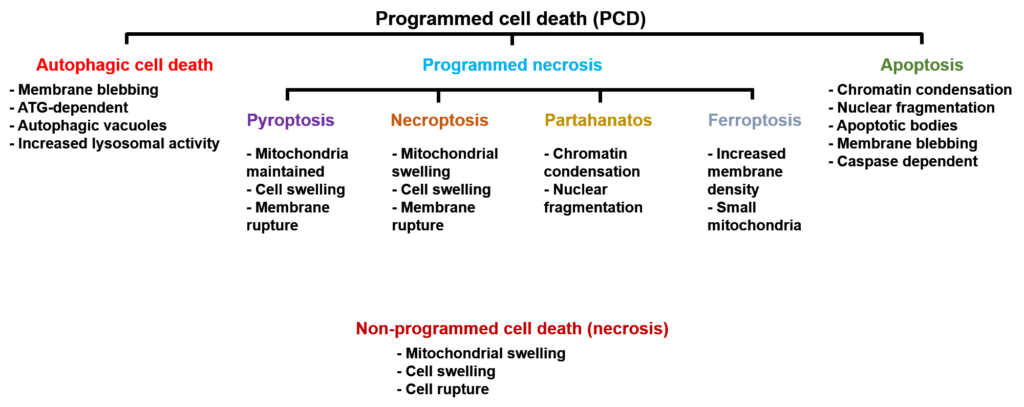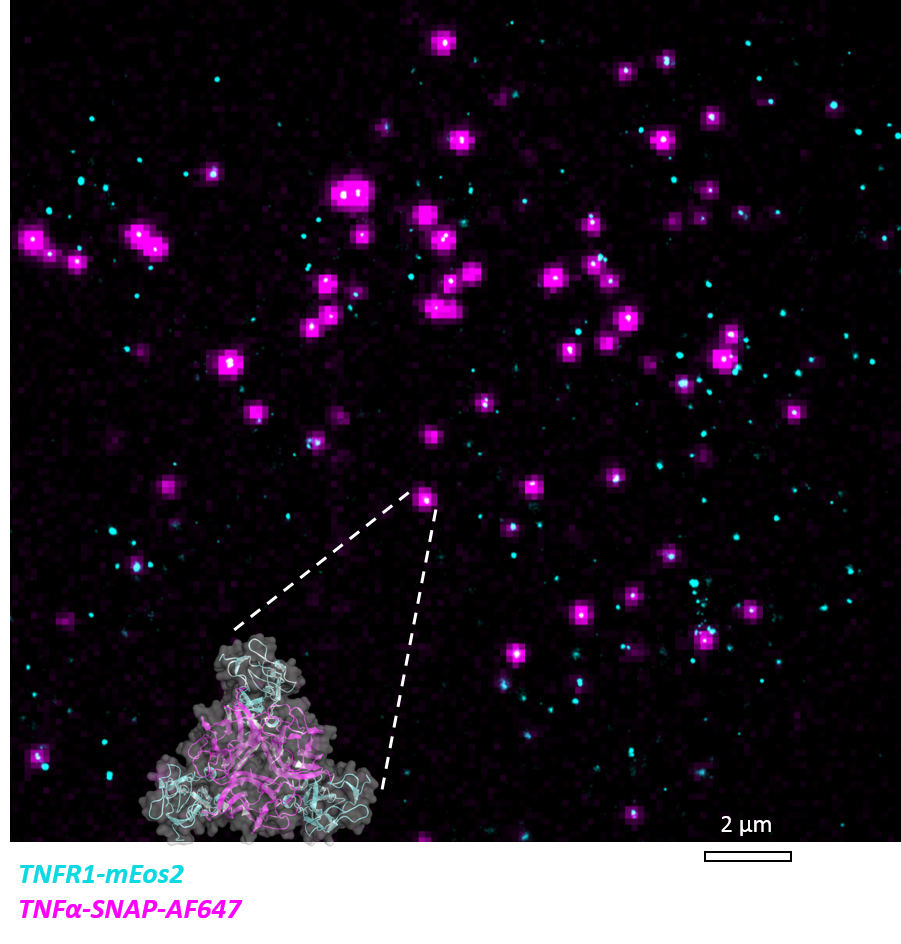cell death
Programmed cell death (PCD) is, in contrast to non-programmed cell death (or necrosis), controlled by active signaling pathways that translate external stimuli in cellular responses. PCD occurs during normal organismal development and underlies tissue homeostasis and organ function. Genetic defects or aqcuired resistance against certain forms of PCD are linked to a wide spectrum of pathophysiological conditions, like tumor formation, inflammatory responses and infection diseases.

Apart from autophagy-induced cell death and caspase-dependent apoptosis, caspase-independent PCDs, like pyroptosis, parthanatos, ferroptosis and necroptosis, are programmed forms of necrosis. Besides PCD-specific molecular and cellular signaling mechanisms, PCDs affect the functional outcome by directly influencing the immunological answer, ranging from non/less immunogenic forms of PCD, like apoptosis, to highly inflammatory responses observed by necroptosis or ferroptosis.
Our research aims to understand how the balance between cell survival and PCD and how different forms of PCD are controlled by post-translational modifications, like ubiquitination (see for example Weinelt and van Wijk 2020 and Rödig et 2020) phosphorylation (see for example Frank et al 2019) and redox modifications (see for example Ehrenfeld, Heusel et al 2020, Habermann et al 2017, Hussain et al 2018) and how death receptor proximal signaling controls survival, PCD and immunogeneicity in cancer and inflammation (see for example Karathanasis et al 2020 and Weinelt et al 2020).
